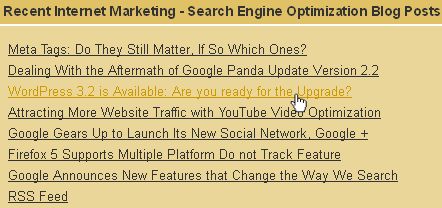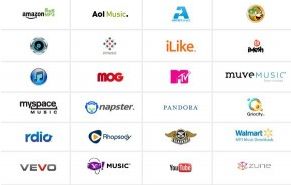Tuesday August 23, 2011 Facebook made several announcements, the majority of which addressed the upcoming sharing and privacy improvements. In addition Facebook addressed smaller topics like the phasing out of the mobile only “Facebook Places” and the renaming of a long time Facebook attribute.

from http://blog.facebook.com/blog.php?post=10150251867797131, August 2011
Privacy and security have always been a major concern for Facebook users. In response to these worries Facebook has made multiple changes to the process for sharing posts, photos, tags, and other any other content. The new set up focuses on making the policies of concern more assessable and understandable to all users. The following Profile Control changes are expected to begin rolling out sometime this week, at that time users will encounter a prompt to tour the new Facebook Profile Features. (August 25, 2011)
The primary adjustment to the new profile is the new location for the privacy and sharing controls. The sharing controls are now available directly on a user’s profile page. These controls were previously only available on the settings pages. The aim for this redesign is to present users with a clearer and more consistent sharing experience. The new inline drop down menus that are now located next to the content posting area can enable a user to instantly adjust who has permission to view the content. Whether it be your thoughts, images, or videos each user will be able to see who can view their content and allow them to grant or deny access with one simple click. Additionally, since many of the settings options have been compiled into these smaller inline menus the previous settings page has also been simplified.
Also launching with the new profile sharing controls is the following sharing, tagging, and privacy policies.
- Control who can view your post while posting
With… Read the rest
Tags: Facebook, Information Security, post, posting, privacy, social networking
Posted in Social Networking | No Comments »
Thursday August 18, 2011 Hewlett-Packard confirmed both their recent discussion with Autonomy Corporation regarding a possible offer for the company as well as the upcoming discontinuation of their webOS devices. In a press release HP expressed their plans to discontinue production for webOS devices including the recently released HP Touch Pad. HP also reported that its board of directors had approved the exploration of strategic alternatives and that they will be considering a wide range of options such as full or partial separation of the Personal Systems Group from HP through a spin-off or other transaction.

from http://www.hp.com, August 2011
This decision follows only 2 months after HP latest product launch, the HP Touch Pad. The HP Touch Pad was initially thought to be a major competitor for the iPad. However, following a rocky launch that included an announcement of a better model just days after the initial release, drastic price changes, and bad PR it was clear that HP had fumbled the release and the HP Touch Pad didn’t stand a chance against the iPad or other competitors.
Along with the dwindling release sales for their new tablet HP was also far behind their mobile competitors. Although the fastest growing consumer electronics are mobile devices according to HP’s chief financial officer Cathy Lesjak “the webOS would require significant investments over the next five years, generating a risk without clear rewards”. HP webOS users currently only account for 3% of the market while Android occupies a steady 40% and Apple controlling fewer than 30%.
HP also faced struggles obtaining developers to build applications for their devices. The more developers there are usually means more applications and more importantly more customers. However because the platform with the most developers usually attracts the most… Read the rest
Tags: consumer electronics, device, HP, hp touch pad, mobile device, smartphone, webOS
Posted in Electronics, Hardware Overview, SmartPhone | No Comments »
A couple weeks ago Google announced a new Page Speed Service which is currently available to only a limited number of webmasters. The new Page Speed service follows many previous speed assessment products that Google has released over the years, releases that include the Page Speed Browser Add-ons and Page Speed Online. These previous releases focused on scoring a websites speed performance and providing users with suggestions or feedback to increase their speed score.

from http://code.google.com/speed/pss/index.html, August 2011
The new Page Speed is a service that doesn’t analyze your website’s speed but instead automatically increases it. The new service retrieves your content from the website server, rewrites the website using their specified guidelines, and then delivers it the site visitor even faster using their servers.
While using the Page Speed Service a website can expect to see a 25%-60% improvement however the exact amount of speed depends on a number of different factors. These factors include the amount of content on your pages, the browser, geographical location, bandwidth and more. Visit the web page test to analyze your website and determine the exact speed increase that the new page speed service can produce for your website.
The test works by simply visiting your site and then repeating the same test by substituting your website into the Page Speed Service. The test takes only minutes to perform and once complete the user is presented with a chart that details the load time from the original server, the load time from the Page Speed Service, the load time for repeat visits from both servers, the percentage of the speed increase, and multiple links to test details. The results also provide a visual rendering for the… Read the rest
Tags: google, Google Page Speed, load time, page speed, page speed service, service, speed, speed boost
Posted in Google, Web Development, Web Tips | No Comments »
According to a recent Tweet from Matt Cutts, Google has released their biggest spam report form refresh in roughly ten years. Along with their own attempts Google also relies on individual users to help combat websites that are spamming their index. As a part of Google’s continuous effort to improve the quality of search results, they ask that you submit a spam report if you come across a site that isn’t following the webmaster guidelines or acceptable practices. Google users can submit spam reports using their Webmaster Tools. 
The previous spam report form was only a single page and had simple check boxes for users to identify the type of spam that was encountered. The new spam center however has a main page that provides a user with 8 different links. Each of the 8 links is for a different type of spam. The links include paid links, objectionable content, malware, other Google products, copyright, legal issues, personal/private, phishing, and other. These links will each direct a user to a separate spam complaint section where the user can then report the web address and express their concerns in full details.
Google depends on their “webmaster quality guidelines” as well as these detailed spam reports to help them generate scalable spam solutions. Instead of struggling against spam one by one they are always seeking new information to enhance their algorithm and combat large bodies of spam. Google’s quality guidelines express the various forms of deceptive or manipulative behaviors and describe how websites can avoid the misleading practices. The basic quality guidelines established by Google are as follows:
- Design pages for users, not for the search engines. Don’t deceive your users or present different content to search engines than you display to users (cloaking).
… Read the rest
Tags: google, google spam report, spam, spam report, webmaster guidelines, webmaster tools
Posted in Google | No Comments »
Earlier this month the WordPress version 3.2 update was released. Version 3.2 is the first WordPress update that requires PHP 5.2.4 or greater and MySQL version 5.0 or greater. WordPress made the announcement concerning the discontinued use of PHP 4 and MySQL 4 a year prior its release to give users ample time to prepare for these changes. WordPress provides several resources for upgrading WordPress but despite the extra preparation many users have encountered bugs in the recent software. Since the release most of the issues have been resolved with the 3.2.1 update however some users continue to experience problems.
Before we began upgrading our own WordPress we first made certain that we met the required specifications. After completing the version 3.2 update we began to experience some problems on our Internet Beacon blog. The issue we encountered didn’t impact our blog but rather our recent blog PHP script that is located on the bottom of our Internet Beacon home page. This section would normally list some of our latest blog but following the update it stopped generating content.

from http://www.internetbeacon.com/, July 2011
Unaware of how to rectify this issue we consulted with the WordPress community and various chat boards. This matter also spurred us to write the blog WordPress 3.2 is Available: Are you ready for the Upgrade? In this blog we informed readers of the buggy nature of 3.2 and detailed how to be prepared for the upgrade as well as how to make certain you can reverse the upgrade process. During the weeks following this post we were still unable to resolve our problem. We did however recently determine… Read the rest
Tags: backup, downgrade, restore, Update, wordpress, wordpress 3.2, wordpress downgrade
Posted in Software | No Comments »
On Wednesday July 20, 2011 the Obama Administration announced their plan to close 800 of their 2,000 data centers over the next four years. The Federal Government initially scheduled the shutdown of 137 data centers by the end of this year. However, currently the process is ahead of schedule with already 81 sites closed so they now expect the closure of 195 facilities. In addition to the revised figure of 195 data centers for 2011 the White House also announced that nearly 200 complexes will be closed by the end of 2012, making the accumulative shutdowns just shy of 400 data centers.

from http://www.whitehouse.gov/blog/2011/07/20/shutting-down-duplicative-data-centers, July 2011
Since 1998 the United States Government has quadrupled their amount of data centers. Throughout the years the development of software that allows for multiple platform access has enabled the government to become more efficient and reduce their need for most data centers. It is reported that many of these sites operate only using 27% of their computing power even though taxpayers continue to pay for the entire infrastructure (land, facilities, equipment, cooling processes and special security elements).
According to the plans of the United States Government, the elimination of these data centers will help them be more efficient during this time of deficit. Over the next four years the shutdowns will allow for more real estate and a drastic reduction in unnecessary spending. The data centers that are marked for termination range in size with some occupying over 200,000 square feet and others residing on only 1,000 square feet of land. The geographic locations of these data centers also vary with locations scattered throughout 30 states. Due to the special equipment contained within these data centers the average power consumption can be 200 times more than regular office buildings and is… Read the rest
Tags: Campaign to cut waste, cloud, data, data center, government, shutdown, storage
Posted in Server, Storage | No Comments »
Scams, viruses, and Facebook Frauds that prey on the curiosity of unsuspecting users are nothing new for the popular social network. Facebook and social networking sites alike create a perfect environment for spammers to instantly reach millions and rapidly spread their lucrative scams. Although the majority of users have learned how to Spot and Avoid Facebook Scams, there are some creative and devious scams that continue to attract the attention of many users. These scams are extremely misleading and publicize something that is either too good to be true or reel users in by taking advantage of the recent headlines.

from http://www.facebook.com/group.php?gid=9874388706&v=wall, July 2011
These scams are usually created to generate some kind of financial gain for spammers and to further spread their spam. Often the fraudulent posting will advertise one thing and then direct a user to a completely unrelated page. Previous Facebook scam such as the “Free iPad scam” and the “See who is viewing your profile scam” have been used as a spamming technique called ClickJacking.
ClickJacking presents a page to the user with a seemingly harmless action button, unbeknownst to the user there is usually a transparent layer with an alternative button positioned directly on top. In other words, when the user thinks that they are clicking the one button they are really clicking the hidden button. The hidden button is usually something that a user would probably avoid if given prior knowledge. For example the button could initiate an unauthorized purchase, an adjustment to your social profile, a twitter follow, or the spamming of your Facebook contacts.
New spam scams are created each day, this week alone we have already seen three new Facebook scams that draw in users by exploiting popular news headlines. Among the scams that appeared this… Read the rest
Tags: casey anthony scam, charlie sheen scam, Facebook, google+ scam, scam, social network, spam, spammer, spamming
Posted in Information Security, Social Networking | 1 Comment »
According to the Recording Industry Association of America (RIAA) several industry leaders from music, movie, television and broadband services have teamed up to educate consumers and diminish online content theft. Among the organizations volunteering are Walt Disney Studios Motion Pictures, Paramount Pictures Corporation, Sony Pictures Entertainment, Twentieth Century Fox Film Corporation, Warner Bros. Entertainment Inc, Universal Music Group Recordings, Warner Music Group, Sony Music Entertainment, EMI Music North America, AT&T, Comcast Corp, and Verizon. These companies and more have all come together to create the foundation for the new Copyright Alert System.

from http://www.riaa.com/toolsforparents.php?content_selector=legal-music-services July 2011
Piracy is a major problem and even with the increased prevention and restrictions it continues to plague the various entertainment industries. For most individuals downloading protected media is often viewed as a minor crime, if one at all. When compared to other illegal activities it does seem minor however when considering the worldwide accumulation of pirated material obtained without compensation the loss and industry devastation is in the millions. The impact of piracy is felt by all parties involved in the media creation process and not only does it affect jobs but the future production of the content we enjoy. As the volume of pirated content continues to increase the amount of revenue continues to decrease and even with digital sales the earned revenue isn’t enough to make up the loss.
P2P file sharing programs like LimeWire are illegal as you can tell upon visiting their court ordered deactivated website. Organizations like the RIAA continually monitor these applications and focus their resources on disbanding them. Fortunately for users there is a ton of legal alternatives for low cost digital content. Some of these programs include Amazon, iTunes, Napster, Pandora, and AOL Music.
According to… Read the rest
Tags: content, copyright, copyright alert system, digital download, digital media, Legal, media industry, piracy
Posted in Legal, Piracy, Software | No Comments »
It was only a year ago that Google implemented a new visual design that focused on providing users with a visual refresh and a convenient sidebar navigation tool. The June 2010 updates also introduced a time based search feature that enables users to search during a period of time such as the last 24 hours, the past year, or a custom range. During Google’s Spring Metamorphosis last year they had mentioned that they are always working on improving the design and experience of Google which has led to many of their latest changes. Users may have noticed that on Tuesday June 28, 2011 that some changes had taken place in an effort to evolve the design and Experience of Google. Not only did Google modify its search engine but that same day Google had also announced the Google+ Project.

from http://www.google.com July 2011
The clean, spacious, and simple design of Google+ coordinate with the new look of Google and are already carrying over to the other Google services like Gmail. The new Google home page has even gone through its own changes. Now with a smaller logo and the links moved to the top and bottom edges, the page has a cleaner and more intuitive feel. Additionally Google now has a universal toolbar that is located at the top of the page and is also consistent across each page and service.
According to Google, “The way people use and experience the web is evolving, and our goal is to give you a seamless and consistent online experience—one that works no matter which Google product you’re using or what device you’re using it on”
In their Google Blog, Google mentions that their new design was based on 3 principles focus, elasticity,… Read the rest
Tags: design, google, Google experience, Search Engine, usability, user experience
Posted in Google, Search Engines | No Comments »
Earlier this month Apple held its annual Worldwide Developers Conference, during the event Apple unveiled the new features of iOS 5 which is set to arrive later this fall . Although the much anticipated release of the iPad2 had come and gone back in March, the news of the newest iOS has seemed to spur iPad2 sales. At a price range set from $499-$829, these devices are definitely an investment that is worth protecting. The following are ten tips to help ensure the safety and protection of iPad devices. The list covers both physical and virtual security so that customers can hopefully prolong the life of their device and be able to take full advantage of the upcoming iOS improvements.

from http://www.apple.com/ipad/features/, June 2011
The iPad Smart Cover isn’t a customer’s only choice however it seems to offer the most protection along with usability. In addition to providing protection, the Smart Cover can also be transformed into an iPad stand with various positions, activate the sleep mode when covered, wake the device when uncovered, grip the iPad using built in magnets, comes in a number of colors and is available in two different materials. Users can also choose to use full shell cases for heavy duty protection or portfolio and envelope cases for the professional environment.
A case or cover doesn’t necessarily mean the screen is fully protected. Screen or scratch protectors are well worth the purchase and not only do they prevent scratches but they have also been known to prevent the screen from shattering on impact. Prior to the release of the iPad2, Apple had stopped selling all anti-glare and screen protection film as what was thought to be a way… Read the rest
Tags: Apple, device, Information Security, Ipad, iPad security, iPad2, password, protect, protection
Posted in Information Security, Mac, iPad | 1 Comment »
|















